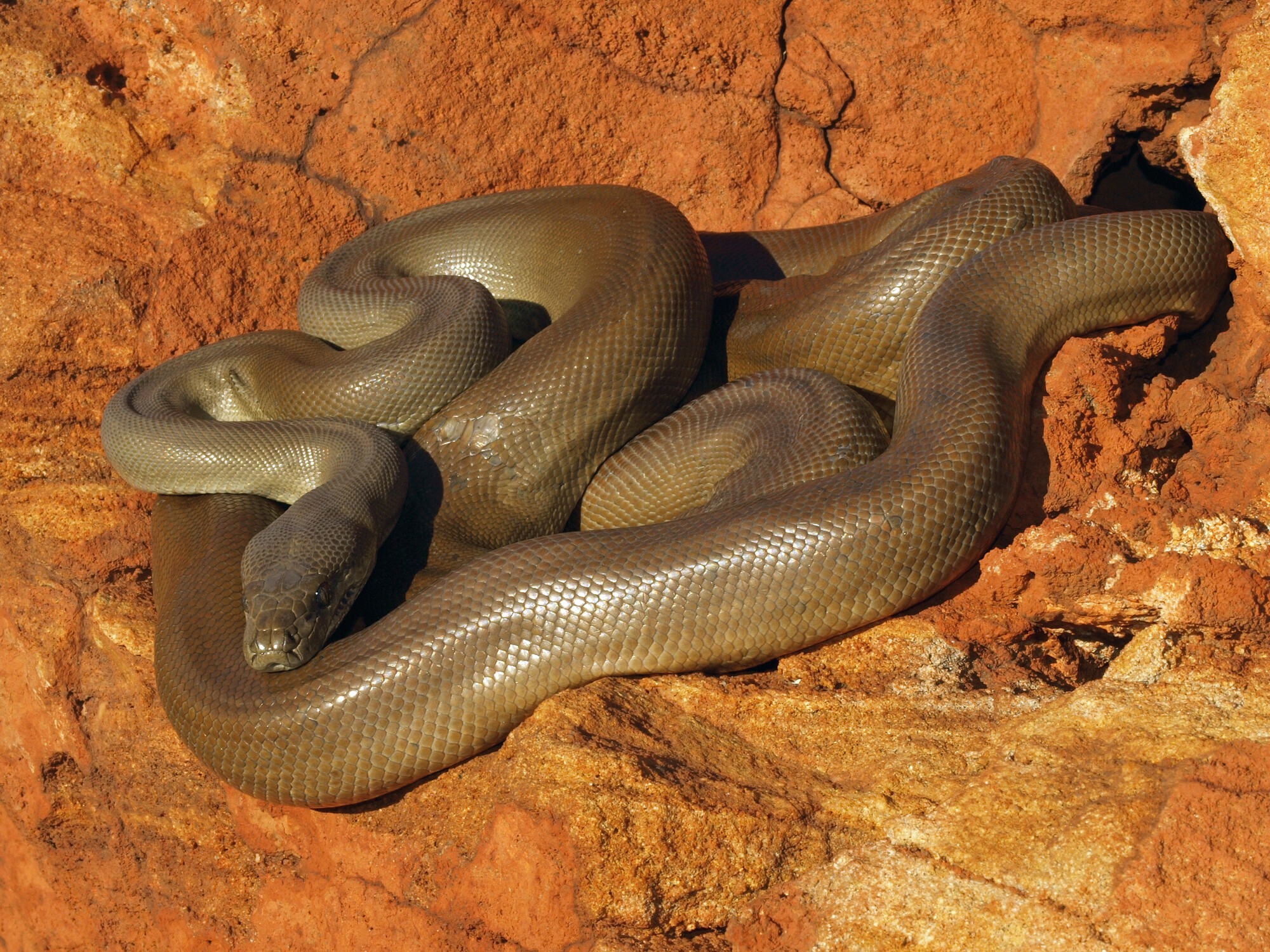Although currently recognised as a subspecies, the Pilbara olive python has sufficient genetic difference from the Kimberley population (another subspecies) to be considered a separate species. It is separated from other populations by vast expanses of the Great Sandy Desert. The Pilbara population is restricted to the Pilbara and north Gascoyne bioregions.
Up to 6.5 m long, this python is the second longest snake in Australia and one of the half dozen longest in the world. It is a top-order predator of mammals, reptiles and birds, inhabiting riparian vegetation during the warmer months when hunting and rocky habitats at other times.
Little is known scientifically about the biology, population or distribution of Pilbara olive pythons. There are no effective monitoring techniques, for they are nocturnal and cryptic, occur at low densities, can’t be trapped and usually don’t trigger camera traps.
This python is well known to Traditional Owners – called ‘bargumyji’ by the Yindjibarndi people and ‘palkunyji’ or ‘parkunarra’ by the Kurrama people. It was once an important food and remains an important spirit figure in explaining how rivers and waterholes were formed.
Because of its large size, low densities and diet (large vertebrates, including some threatened species) the Pilbara olive python is likely to be susceptible to decline, but there is not enough information about historical or current populations to determine trends.
Potential threats include habitat destruction and degradation by mining, habitat degradation around water bodies due to cattle, predation by foxes and feral cats on young pythons and important food species (such as bats, quolls and rock-wallabies), and altered fire regimes. Cane toads could be a threat if they arrive in the Pilbara.
